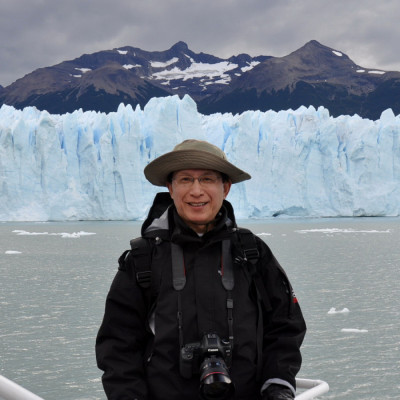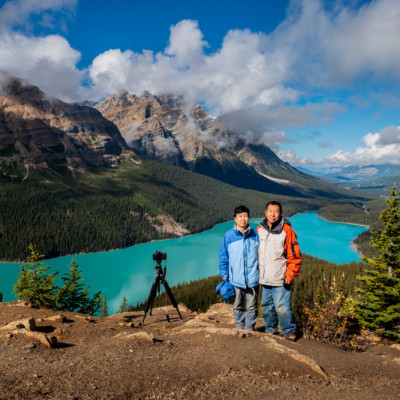SEARCH






|
|
|
|


by Editor Miro Susta (mirosu)
Edited and published by Yvette Depaepe, the 11th of October 2024
As announced in previous article, here are some selected historical sites, buildings, and other structures are presented in word and pictures.
PETRA
The undoubtedly most striking historical attraction in Jordan is a “Rock City” Petra – a historical city carved into the red sandstone - located in the Wadi Musa valley.at an altitude between 800 and 1350 meters above sea level in the southern part of the country, around 230 km south of Amman and 125 km north of Aqaba.
Petra is a UNESCO World Heritage Site and one of the Seven Wonders of the World.
Treasury By Night by Karsten Wrobel
Founded in the third century BC, Petra was inhabited by the Nabataeans, who chose Petra as the capital of their kingdom. Originally, the area was intended to serve as a sacred burial site at the boundary of the three valleys of Wadi al-Arab.
Over time, however, the city's location proved ideal for trade, among other things, and for several centuries trade was even the main activity that kept Petra thriving or declining. This era was only brought to an end by a series of devastating earthquakes, after which almost all the inhabitants left the city. Only the Bedouins remained, and they hid the city from the world for a long time. ‘Petra’ comes from the Greek and means “rock” or ’stone’.
SEGOVIA MEDIEVAL CASTLE
The Alcázar of Segovia (Segovia Medieval Castle) from the early 12th century is one of the most famous medieval castles in the world and one of the most visited monuments in Spain.
'Segovia Medieval' by Helena Garcia Huertas
Twenty-two kings and some of the most important personalities in history have passed through its rooms. It is a symbol of the historic centre of Segovia, which was declared a World Heritage Site by UNESCO in 1985.
GREAT WALL
The Great Wall of China, which has been a UNESCO World Heritage Site since 1987, is visited by millions of people every year, making it one of the most popular monuments in the world. The Great Wall of China is the only man-made structure that can be seen from space. Over the course of almost 2,300 years, millions of people engaged in building the wall. Some, especially in later times, voluntarily, most of them under pressure.
'Great Wall sunrise' by Hua Zhu
The Great Wall begins in the east at the border between China and the Russian part of Manchuria and ends on the Silk Road in the Gobi Desert. Its origins date back to the third century BC and it reached its peak during the Ming dynasty between the 14th and 17th centuries.
During the Ming Dynasty, bricks were used as the main building material in addition to stone. The bricks were fired in special kilns at a temperature of more than 1000 °C for seven days. They were about four times bigger and stronger than the ones we know today. Their load-bearing capacity is comparable to reinforced concrete.
The Great Wall of China is not just one wall, in fact it is at least sixteen different walls which were defended by over 750,000 men. The United Walls of China are so long that they would connect the two poles of our planet. Their total length is around 21,000 kilometres.
Great Wall is one of the Seven Wonders of the World.
DERAWAR FORT
Derawar Fort is located in the Punjab province and is the second largest Fort in Pakistan. The Fort began construction in the ninth century. At that time, it comprised only a few defensive buildings surrounded by walls.
'Derawar Fort 2' by Sayyed Nayyer Reza
However, as tensions escalated in the region, Derawar Fort gradually began to grow. Today, its robust walls are up to 1.5 kilometres long. Around their perimeter are thirty-three bastions from which soldiers kept watch over the surrounding area.
PYRAMID OF GIZA
Pyramids of Giza belong to the most important historical sites in Egypt. They are located in the necropolis of Giza and are part of a series of ancient monuments that also include the Pyramid of Khufu, the Great Sphinx of Giza, and many others. For thousands of years, they were the tallest man-made structures in the world. Today, they are part of UNESCO's World Heritage Sites and considered to be one of the Seven Wonders of the Ancient World.
'Back in Time' by Kenneth Zeng
Here are some interesting facts:
Completion: Pyramid of Khufu: 2600 BC, Pyramid of Chephren: 2570 BC, Pyramid of Mykerinos: 2510 BC.
Height: Pyramid of Khufu: 138 metres / Pyramid of Khafre: 136 metres / Pyramid of Mycerinus: sixty-two metres
MACHU PICCHU
Machu Picchu is located132 km from Cusco, the oldest living city of the Americas and 9 km from hot springs of Aguas Caliente at an altitude of around 2,400 metres above sea level in the Andes mountains in South American Peru, built in years around 1450.
'Awakening' by Veselin Atanasov
For a long time, Machu Picchu was called the ‘lost city of the Incas’ because it was only ‘found’ in 1911 during an expedition led by the American archaeologist Hiram Bingham.
Today it is recognised as one of the 7 Wonders of the World and has been declared a UNESCO World Heritage Site.
TAJ MAHAL
Taj Mahal is a white ivory marble mausoleum located on the right bank of the Yamuna River in Agra, Uttar Pradesh, India.
Taj Mahal was registered an UNESCO World Heritage Site in 1983 because it is "a jewel of Islamic art in India and one of the universally admired masterpieces of world heritage". It became one of the Seven Wonders of the World in 2007.
The Taj Mahal was commissioned by Shah Jahan in memory of his wife Mumtaz Mahal, who died giving birth to their 14th child, Gauhara Begum.
'Taj Mahal' by Miro Susta
Taj Mahal interesting facts:
Taj Mahal is seventy-three metres high. It took 22 years to build (1632-1653). More than 22,000 workers and 1,000 elephants worked on its construction.
Various precious stones were brought from different countries of the world for the construction. For example, white marble stone was brought from Rajasthan, blue gems from Tibet, emeralds from Sri Lanka, jasper from Punjab and crystals were brought from China.
The Taj Mahal is a blend of Persian, Ottoman, Indian and Islamic architectural styles.
It is said that Shah Jahan wanted to build a black coloured Taj Mahal soon after the white one was completed. But his plans were defeated by his son Aurangzeb.
Taj Mahal means "crown of the palace".
HISTORICAL PRAGUE
City of Prague has been given many nicknames over the ages, the Petrified Beauty, the Golden City, the Hundred-Towered Prague, the Mother of Cities. History has brought influences from all over Europe over the centuries to Prague.
'Praha VI' by Juan Pablo de Miguel
Among the cities of the Czech Republic, Prague occupies a privileged position as a metropolis, a position it has held since the Middle Ages. Throughout its history, it has played a representative role and still retains its image as one of the most beautiful cities in the world. Prague's artistic, social, cultural, and political importance is reflected in its generous medieval foundation and its extraordinary architectural wealth.
'Charles Bridge' by Marcel Rebro
Many world-famous landmarks, such as Prague Castle, Charles Bridge with its towers, the National Theatre, the Rudolfinum, cubist buildings and countless churches and monasteries, are complemented by younger residential, commercial, and administrative buildings built over the centuries on both sides of the Vltava River.
Historic Centre of Prague has been declared an UNESCO World Heritage Site.
TEMPLE OF POSEIDON
Almost 2,500 years old, the Temple of Poseidon was built during the Golden Age of Athens in Sounion from 444 to 440 BC. It is believed that the architect who built the Temple of Poseidon also built the Temple of Hephaestus and the Parthenon.
'Temple of Poseidon' by Chris Kaddas
In Greek mythology, Aegeus, the king of Athens, committed suicide at Cape Sounion by jumping off the cliff by the sea where the Temple of Poseidon is located. Aegeus killed himself because he believed that his son Theseus had died in battle.
However, Theseus won the battle and survived, and after the Greeks defeated the Persians in 479 BC, the Greeks placed captured Persian warships in Sounion as a trophy dedicated to Poseidon.
BAGAN
Bagan is a sacred landscape that is home to an extraordinary variety of Buddhist art and architecture. With around 2,500 remaining temples and pagodas, the plain of Bagan forms the archaeological centre of the region and is the most important historical site in Myanmar.
'Sunrise Bagan II' by Wendy
The historical buildings extend over forty-two square kilometres and mostly date from the 11th to 13th centuries. The temples are still admired for their exceptional craftsmanship and unique architectural style.
Since 2019, Bagan has been an UNESCO World Heritage Site in the Mandalay region of Myanmar.
ST. PETER's BASILICA
St. Peter's Basilica at the Vatican is one of the largest cathedrals in the world. Its construction began in 1505 on the site of an earlier basilica dating from 324 and the alleged burial place of St. Peter. On 18 November 1629 it was consecrated by Pope Urban VIII. Completion work lasted until 1666.
'Vatican Sunset' by Jose Parejo
The Basilica is the work of many important architects and artists who contributed to its construction: Bramante, Peruzzi, Baldassare, Giuliano de Sangallo, Antonio de Sangallo the Younger, Carlo Moderno, Giacomo della Porta, Raphael, Michelangelo, Domenico Fontana, and Bernini.
Until 1990, when the Basilica of Our Lady of Victory in Ivory Coast was consecrated by Pope John Paul II, St. Peter's Basilica was the largest church in the world. It covers an area of 15,160 square meters.
The dome weighs 14,000 tons, the external height is 136 and the total length of the basilica is 212 meters.
AHU TONGARIKI
Ahu Tongariki, an assembly of fifteen majestic Moai statues, is the largest ceremonial site on Easter Island and in the whole of Polynesia. These monumental sculptures have been carefully placed on the Ahu platform altar, originating from the nearby Rano Raraku quarry.
'Ahu Tongariki' by Tomoaki Katsuba
The 900-year-old site has a turbulent history, with the most tragic event occurring on 23 May 1960, when a tsunami overturned the entire site and washed it inland! The moais, which weighed up to ninety tonnes, were pushed some fifty metres away! The tsunami wave, estimated to be eleven metres high, was triggered by a magnitude 9.5 earthquake off the Chilean coast near Valdivia.
JABAL AI AHMAR
Jabal Al Ahmar in Hegra, an UNESCO World Heritage Site, roughly translated as ‘The Red Mountain’ is located in the Saudi Arabian desert, close to the majestic Al-Ula Valley. Once an important trading hub for the Nabataean people, Hegra is now the centre of a groundbreaking project that combines science and art and introduces us to a Nabataean woman for the first time.
'Alula' by Hanaa Turkistani
The necropolis of Jabal al-Ahmar in Hegra is one of four surviving necropolis areas. It contains eighteen tombs, some of which have only recently been uncovered. The remains of a 2,000-year-old Nabataean woman, Hinatit, were filled with unusually well-preserved materials such as buried human remains - bones, skin and even hair - as well as textiles, leather, plant materials and other substances.
BOROBODUR
The Borobudur Temple, with 504 Buddha statues, is the largest Buddhist temple in the world and one of the most magnificent ancient Buddhist temples in Central Java, Indonesia. It is one of the most important archaeological sites in Southeast Asia and a UNESCO World Heritage Site.
Borobudur was built in the ninth century during the reign of the Sailendra dynasty and abandoned in the 14th century for reasons that remain a mystery to this day. There are many theories ranging from volcanic eruptions to the changing political and religious landscape that brought a turn to Islam in the region.
'Light Of Borobudur Temple' by Adnan Hidayat P
To this day, Borobudur serves as a pilgrimage site for Buddhists and is a central part of the annual Vesak festival, which celebrates the birth, enlightenment, and death of Buddha. It is interesting to note that Borobudur has survived numerous natural disasters, including earthquakes, which are common in the region due to Indonesia's location on the Pacific Ring of Fire.
ANGKOR WAT
Last in this article is the famous Angkor Wat in Cambodia - built by King Suryavarman II between 1113 and 1150 – it is considered the most famous historical buildings site in the region, if not in the entire world. The huge temple complex covers more than two hundred square kilometres and comprises around 1,000 different temples.
'Angkor Wat' by Tomoaki Katsuba
Although Angkor Wat does not rank among the seven wonders of the world, it is often referred to as the ‘8th wonder of the world’ due to its breathtaking beauty and historical significance. It is also recognised as a UNESCO World Heritage Site, further cementing its global significance.
The world is full of wonderful, mystical, fascinating, and highly interesting historical places that we might visit again in another article in the future.
mrsphoto.net
[email protected]
 | Write |
 | Kenneth-Wei Zeng PRO Dear Yvette and Miro,
Thank you very much for including my photo in your wonderful article. I feel very honored! |
 | Miro Susta CREW Dear Kenneth your photo from Giza is really wonderful, I was lucky to find it large 1x photo gallery, also many thanks for your nice comment. |
 | Helena GARCIA HUERTAS PRO Thank you very much for including one of my photographs among all those beautiful images, it is an honor for me. Impresive article |
 | Miro Susta CREW You are most welcome dear Helena I love your wonderful photos, thanks for your praise. |
 | Izabella Végh PRO Mille grazie per questo articolo così ricco di fotografie e testo eccezionale. Tutti questi articoli sul sito 1x meriterebbero un libro, penso già da tanto tempo. |
 | Miro Susta CREW Grazie mille per il tuo bel commento cara Izabella, la tua idea è davvero buona, ma sarebbe un libro molto grande. |
 | Kimberly CREW Wonderful article Miro, stunning images |
 | Miro Susta CREW Many thanks for your nice words of encouragement dear Kimberly |
 | Eduardo Blanco García PRO Extraordinario |
 | Miro Susta CREW Much as gracias querido Eduardo |
 | Parole Kim PRO Excellent work, Thank you so much for sharing. |
 | Miro Susta CREW Many thanks for your nice words of appreciation dear Parole |
 | Pang Teng Lin PRO Spectacular capture. Thank you for sharing. |
 | Miro Susta CREW Thank you very much dear Pang Teng |
 | Raymond Ren Rong Liu PRO Thank you very much for sharing the wonderful photos with us ! |
 | Miro Susta CREW You are most welcome dear Raymond |
 | Eiji Yamamoto PRO Thank you so much again for the wonderful article with great and beautiful photos! |
 | Miro Susta CREW Many thanks dear Eiji, happy to see that you like it |
 | Igor Kopcev PRO interesting story! excellent woks! |
 | Miro Susta CREW Many thanks for your appreciation dear Igor |
 | Sunil Kulkarni PRO Excellent article and excellent photos - love it |
 | Miro Susta CREW Many thanks for your praise dear Sunil, happy to see that you like it |
 | Mariuca Brancoveanu PRO What a feast for the armchair traveller! A marvelous collection worth a picture book. |
 | Miro Susta CREW Many thanks for your great words of praise dear Mariuca |
 | Wanghan Li PRO Thanks a lot for your wonderful article and the selection of the beautiful, historic and amazing works! Learning. |
 | Miro Susta CREW Many thanks for your great words of appreciation dear Wanghan |
 | FranzStaab PRO Wieder ein sehr interessanter Artikel und super Fotos. |
 | Miro Susta CREW Vielen Dank für deine Anerkennung lieber Franz |
 | Montserrat Alviani PRO I loved the article and the accompanying images. Congratulations to all the photographers featured in the article and thank you so much for sharing so much beauty. |
 | Miro Susta CREW Many thanks for your great words of appreciation dear Montserrat |
 | Hanaa Turkistani such an epic photos, pleasent to the eye ans soul.. thanks for choosing my picture of Alula dear Yvette. |
 | Miro Susta CREW Thank you very much for your nice words of appreciation dear Hanaa |
 | Roland Weber PRO Absolutely interesting and very good chosen photos.
I think, I need to travel more, much more...
Thanks for the inspiring article. |
 | Miro Susta CREW Thank you for your kind words of encouragement dear Roland, hoping that you will find an inspiration for your future travels in our articles |
 | Izak Katz PRO Interesting article and nice images !! .
|
 | Miro Susta CREW Thnak you very much dear Izak. |